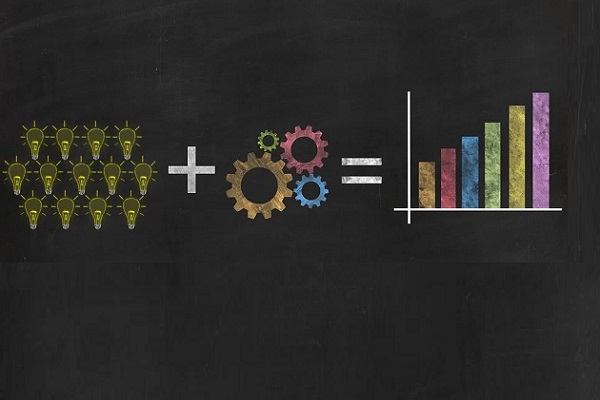The implementation of any HCM platform often suffers from failures due to cost overruns, poor project management, resource allocation, and numerous similar issues. An annual survey from project management company Innotas reveals that over 60% of HCM implementation projects are poorly executed, unsuccessful, or cancelled before completion.
It is worth noting that a substantial number of projects fail due to lack of change management, data issues, inadequate testing, poor documentation, and ineffective governance. Requirements differ from one organisation to another, making it imperative for the project managers and functional consultants to be smart while using the implementation methodology. There are no foolproof measures that one can implement, but some methods certainly have better chances of success than the others. Herein, I have tried to review some of the best practices for implementing any HCM product. In the journey, I will cite the ten key elements which would act as "drivers to enable flawless HCM implementations" and relate them with the structure of Earth. We will witness how each element has its own criticality and how, without any one of them, the entire ecosystem can just perish.
The Inner Core
The key component of the planet, and aids in stabilising the magnetic field generated by the outer core which may otherwise lead to geomagnetic reversals[1]. Similarly, without the core elements of implementation in place, any project is deemed to fall apart. Let us understand each of the parameters in detail.
.jpg)
The WHYs of Implementation
In any project implementation, it is critical to articulate what outcomes are expected with respect to the drivers. These outcomes will serve as guidelines for all the decisions throughout the project. It is important to take a baseline measurement so that the ROI can be proven with respect to the investment.
SMEs Driven
Any successful implementation should engage the SMEs from the very beginning. These SMEs act as a pillar of strength in guiding the implementation and ensuring that the business outcomes are met at each stage.
The Outer Core
The outer core helps in creating the Earth's magnetic field. This magnetic field deflects the charged particles of solar winds which would otherwise impact the Ozone layer responsible for protecting the Earth from harmful ultraviolet radiation[2]. Imagine if such a critical aspect is missing in the project implementation, it could turn into a disaster. Let us understand the elements of the outer core for any project implementation.
Driving Best Practices
While optimising any system, it is vital that the SMEs should focus on driving the industry best practices. A lot of HCM providers have expertise in various industry segments, and the same experience should be utilised to optimise the processes. This would certainly help in driving automation.
Inculcating Project Criticality
The project team must understand that HCM implementation is a critical transformation. At the same time, the leadership team should help prioritise the same and avoid the temptation to save on cost.
Planning Ongoing Transitions
It is critical to focus on the objective of driving continuous improvement. Although the objective of driving any project implementation is to have a perfect configuration before the launch, it is unrealistic to achieve complete perfection on the day of the launch. One should start with a very strong foundation and aim to
evolve as well as optimise continuously.
Thorough Testing
It's very critical to test the HCM product configurations thoroughly before deploying the same to go live. There should be at least 2-3 levels of testing done before making the project go live. The first set of testing should be performed by the configuration expert based on the detailed test cases provided. Based on the sign-off, the same should then be tested by the respective functional consultant. On the closure of the same, the test cases should then be handed over to the customer SMEs to ensure that all scenarios are covered and tested thoroughly before the product launch. This also provides the opportunity to detect problems and address concerns and ensure that there are no issues in the live environment.
User Training
Training is the most important element to drive change management. With many new products getting deployed, it is imperative that 'change champions' are identified. These 'change champions' should be able to clearly understand the system and focus on the targeted project outcomes while ensuring the effectiveness of new systems supporting the workflows.
The Mantle
The mantle plays a vital role in the evolution of the crust. It provides thermal and mechanical driving forces for plate tectonics[3]. Comparing this to the implementation model, driving meticulous project governance plays a critical role in defining a project's success.
Poor or no governance can derail the entire project roadmap. While there are other factors which govern the timeliness and the project quality; project governance cannot be ignored. The project teams should ensure that regular governance is being delivered at all levels, i.e. operative, tactical, and strategic. There should be a weekly review amongst the project managers followed by fortnightly tactical review and a monthly strategic review. Apart from the project being reviewed at every level, there should be periodic updates that are shared with all the stakeholders to ensure that no stone is left unturned during the project to ensure flawless delivery.
The Crust
The crust is an extremely thin layer of rock that makes up the outermost solid shell of our planet but plays a vital role in most of Earth's natural cycles[4]. The natural cycles balance and regulate Earth as well as its atmosphere. Any change to Earth's cycles can change our planet's climate[5]. Similarly, strong leadership makes the crust for every successful implementation. It is imperative that without the same, no project would be able to survive.
Multiple management studies have supported the same idea. As per a survey conducted by 'Best Practices in Change Management' in 2018, a significant number of participants identified engagement and support from the middle as well as top management as a top contributor to the success of change management. Both middle and top management act as the binding pillars for any organisation. They drive change across the organisation and can influence most of the employees. Getting the leadership team to support the project ensures that the teams are aligned to the organisation goals. They can also consistently reinforce the message of driving the project to success and reiterating that failure is not an option.

The Atmosphere
The atmosphere is a crucial component that makes our planet liveable by blocking the dangerous rays from the sun, trapping heat, and ensuring that Earth has a comfortable temperature as well as oxygen levels which are essential for life[6].
Increasingly, companies are now linking employee experience to their success metrics parameters. The Future Workplace and Beyond.com study entitled "The Active Job Seeker Dilemma" found that 83% of HR leaders said employee experience is either 'important' or 'very important' to their organisation's success.
As per the research done by Wiley, companies who invest in employee experience are four times more profitable than those who don't.
Several organisations are now using technology to elevate employee experience. The intent is to make both the process and technology personalised to a user. This brings out a fresh perspective in managing people with the employee and their subjective experience as a starting point.
Irrespective of your industry, you will find a lot of employees executing their tasks remotely. Today, employees expect their employers to serve them the way they feel comfortable. This means that every employer needs to think like a marketer to ensure that the user needs are met by focusing on personalisation, recommendation, socialisation, and analytics. Designing your processes on these four principles will help you determine if your organisation delivers a successful digital employee experience.

References:
[1] https://en.wikipedia.org/wiki/ Geomagnetic_reversal
[2] https://www.nationalgeographic.org/ encyclopedia/core/
[3] https://www.sciencedirect.com/topics/ earth-and-planetary-sciences/earthmantle
[4] https://www.thoughtco.com/all-aboutthe -earths-crust-1441114
[5] https://www.eo.ucar.edu/kids/green/ cycles1.htm
[6] https://www.windows2universe.org/ earth/Atmosphere/overview.html
Are you comfortable working with dispersed colleagues?
Trending
-
SBI General Insurance Launches Digital Health Campaign
-
CredR Rolls Out 'Life Happens' Leave For Its Employees
-
Meesho Announces 30-Week Gender-Neutral Parental Leave Policy
-
Microsoft Unveils Tech Resilience Curriculum To Foster An Inclusive Future
-
60% Indian Professionals Looking For Job Change Due To COVID: Survey
-
SpringPeople And Siemens Collaborate For Digital Transformation Push
-
86% Professionals Believe Hybrid Work Is Essential For Work Life Balance: Report
-
Almost 1 In Every 3 People's Personal Life Affected Due To Work Stress
-
Meesho Rolls Out Reset And Recharge Policy For Employees
-
80% Of Talent Leaders & Academics Say Pandemic Changed Skill Needs For Youth: Report
-
Hero Electric Rolls Out 'Hero Care' Program For Employees
-
Human Capital In Collaboration With ASSOCHAM Hosts Virtual Conference
-
IKEA India, Tata STRIVE Collaborate To Create Employability And Entrepreneurship Opportunities
-
SAP India, Microsoft Launch Tech Skilling Program for Young Women
-
DXC Technology, NASSCOM Collaborate For Employability Skills Program
-
Lenskart To Hire Over 2000 Employees Across India By 2022
-
Mindtree Launches Learn-and-Earn Program
-
Tata AIA Extends 'Raksha Ka Teeka' To Its Employees
-
Swadesh Behera Is The New CPO Of Titan
-
NetConnect Global Plans To Recruit 5000 Tech Professionals In India
-
Hubhopper Plans To Hire 60% Of Indian Podcasters By 2022
-
Corporate India Needs More Women In Leadership Roles: Report
-
Aon to Invest $30 Million and Create 10,000 Apprenticeships by 2030
-
Tech Mahindra Launches ‘Gift a Career’ Initiative for Upskilling of Youth
-
40% Women Prefer Flexible Working Options in Post-COVID World: Survey
-
3 out of 4 companies believe they can effectively hire employees virtually: Report
-
Vodafone , CGI and NASSCOM Foundation launch digital skills platform
-
Odisha: Bank, postal employees to deliver cash for elderly, differently-abled persons
-
Skill India launches AI-based digital platform for "Skilled Workforce"
-
Hiring activity declines 6.73% in first quarter: Survey
-
70% startups impacted by COVID-19 pandemic
-
Bajaj Allianz Life ropes in Santanu Banerjee as CHRO
-
Over 70 Percent MSMEs look at cutting jobs to sustain businesses
-
93 Per Cent employees stressed about returning to office post-lockdown
-
Johnson & Johnson India announces family benefits for same gender partners
-
Indian firms turning friendly towards working mothers
-
Welspun India names Rajendra Mehta as new CHRO
-
Wipro partners with NASSCOM to launch Future Skills platform



Human Capital is niche media organisation for HR and Corporate. Our aim is to create an outstanding user experience for all our clients, readers, employers and employees through inspiring, industry-leading content pieces in the form of case studies, analysis, expert reports, authored articles and blogs. We cover topics such as talent acquisition, learning and development, diversity and inclusion, leadership, compensation, recruitment and many more.
Subscribe Now









































Comment